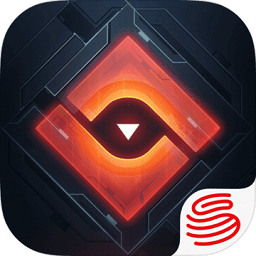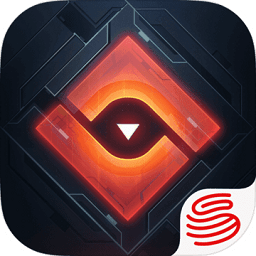Linux内核编程(替换printk)
时间:2007-02-17 来源:PHP爱好者
著者:Ori Pomerantz
翻译: 徐辉
9.替换printk's
在开始(第1章)的时候,我们说过X与内核模块编程并不混合。这开发内核的时候这是正确的,但是在实际应用中我们希望把消息送到给模块的命令发来的任何一个tty(注9.1)。这在内核模块被释放时确认错误是很重要的,因为它将会在所有内核中使用。
这样做的方法是使用当前的概念,一个指向当前运行任务的指针,从而得到当前任务的tty结构。然后,我们到tty结构里寻找一个指向写串函数的指针,我们用这个函数把一个串写进tty。
ex printk.c
/* printk.c - send textual output to the tty youre
* running on, regardless of whether its passed
* through X11, telnet, etc. */
/* Copyright (C) 1998 by Ori Pomerantz */
/* The necessary header files */
/* Standard in kernel modules */
#include /* Were doing kernel work */
#include /* Specifically, a module */
/* Deal with CONFIG_MODVERSIONS */
#if CONFIG_MODVERSIONS==1
#define MODVERSIONS
#include
#endif
/* Necessary here */
#include /* For current */
#include /* For the tty declarations */
/* Print the string to the appropriate tty, the one
* the current task uses */
void print_string(char *str)
{
struct tty_struct *my_tty;
/* The tty for the current task */
my_tty = current->tty;
/* If my_tty is NULL, it means that the current task
* has no tty you can print to (this is possible, for
* example, if its a daemon). In this case, theres
* nothing we can do. */
if (my_tty != NULL) {
/* my_tty->driver is a struct which holds the ttys
* functions, one of which (write) is used to
* write strings to the tty. It can be used to take
* a string either from the users memory segment
* or the kernels memory segment.
*
* The functions first parameter is the tty to
* write to, because the same function would
* normally be used for all ttys of a certain type.
* The second parameter controls whether the
* function receives a string from kernel memory
* (false, 0) or from user memory (true, non zero).
* The third parameter is a pointer to a string,
* and the fourth parameter is the length of
* the string.
*/
(*(my_tty->driver).write)(
my_tty, /* The tty itself */
0, /* We dont take the string from user space */
str, /* String */
strlen(str)); /* Length */
/* ttys were originally hardware devices, which
* (usually) adhered strictly to the ASCII standard.
* According to ASCII, to move to a new line you
* need two characters, a carriage return and a
* line feed. In Unix, on the other hand, the
* ASCII line feed is used for both purposes - so
* we cant just use n, because it wouldnt have
* a carriage return and the next line will
* start at the column right
* after the line feed.
*
* BTW, this is the reason why the text file
* is different between Unix and Windows.
* In CP/M and its derivatives, such as MS-DOS and
* Windows, the ASCII standard was strictly
* adhered to, and therefore a new line requires
* both a line feed and a carriage return.
*/
(*(my_tty->driver).write)(
my_tty,
0,
"1512",
2);
}
}
/* Module initialization and cleanup ****************** */
/* Initialize the module - register the proc file */
int init_module()
{
print_string("Module Inserted");
return 0;
}
/* Cleanup - unregister our file from /proc */
void cleanup_module()
{
print_string("Module Removed");
}
php爱好者站 http://www.phpfans.net 为phper提供一切资讯.
翻译: 徐辉
9.替换printk's
在开始(第1章)的时候,我们说过X与内核模块编程并不混合。这开发内核的时候这是正确的,但是在实际应用中我们希望把消息送到给模块的命令发来的任何一个tty(注9.1)。这在内核模块被释放时确认错误是很重要的,因为它将会在所有内核中使用。
这样做的方法是使用当前的概念,一个指向当前运行任务的指针,从而得到当前任务的tty结构。然后,我们到tty结构里寻找一个指向写串函数的指针,我们用这个函数把一个串写进tty。
ex printk.c
/* printk.c - send textual output to the tty youre
* running on, regardless of whether its passed
* through X11, telnet, etc. */
/* Copyright (C) 1998 by Ori Pomerantz */
/* The necessary header files */
/* Standard in kernel modules */
#include /* Were doing kernel work */
#include /* Specifically, a module */
/* Deal with CONFIG_MODVERSIONS */
#if CONFIG_MODVERSIONS==1
#define MODVERSIONS
#include
#endif
/* Necessary here */
#include /* For current */
#include /* For the tty declarations */
/* Print the string to the appropriate tty, the one
* the current task uses */
void print_string(char *str)
{
struct tty_struct *my_tty;
/* The tty for the current task */
my_tty = current->tty;
/* If my_tty is NULL, it means that the current task
* has no tty you can print to (this is possible, for
* example, if its a daemon). In this case, theres
* nothing we can do. */
if (my_tty != NULL) {
/* my_tty->driver is a struct which holds the ttys
* functions, one of which (write) is used to
* write strings to the tty. It can be used to take
* a string either from the users memory segment
* or the kernels memory segment.
*
* The functions first parameter is the tty to
* write to, because the same function would
* normally be used for all ttys of a certain type.
* The second parameter controls whether the
* function receives a string from kernel memory
* (false, 0) or from user memory (true, non zero).
* The third parameter is a pointer to a string,
* and the fourth parameter is the length of
* the string.
*/
(*(my_tty->driver).write)(
my_tty, /* The tty itself */
0, /* We dont take the string from user space */
str, /* String */
strlen(str)); /* Length */
/* ttys were originally hardware devices, which
* (usually) adhered strictly to the ASCII standard.
* According to ASCII, to move to a new line you
* need two characters, a carriage return and a
* line feed. In Unix, on the other hand, the
* ASCII line feed is used for both purposes - so
* we cant just use n, because it wouldnt have
* a carriage return and the next line will
* start at the column right
* after the line feed.
*
* BTW, this is the reason why the text file
* is different between Unix and Windows.
* In CP/M and its derivatives, such as MS-DOS and
* Windows, the ASCII standard was strictly
* adhered to, and therefore a new line requires
* both a line feed and a carriage return.
*/
(*(my_tty->driver).write)(
my_tty,
0,
"1512",
2);
}
}
/* Module initialization and cleanup ****************** */
/* Initialize the module - register the proc file */
int init_module()
{
print_string("Module Inserted");
return 0;
}
/* Cleanup - unregister our file from /proc */
void cleanup_module()
{
print_string("Module Removed");
}
php爱好者站 http://www.phpfans.net 为phper提供一切资讯.
相关阅读 更多 +
排行榜 更多 +










